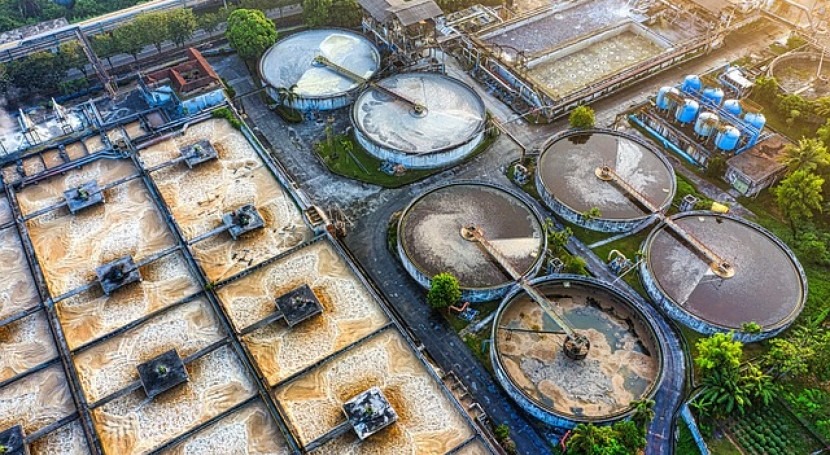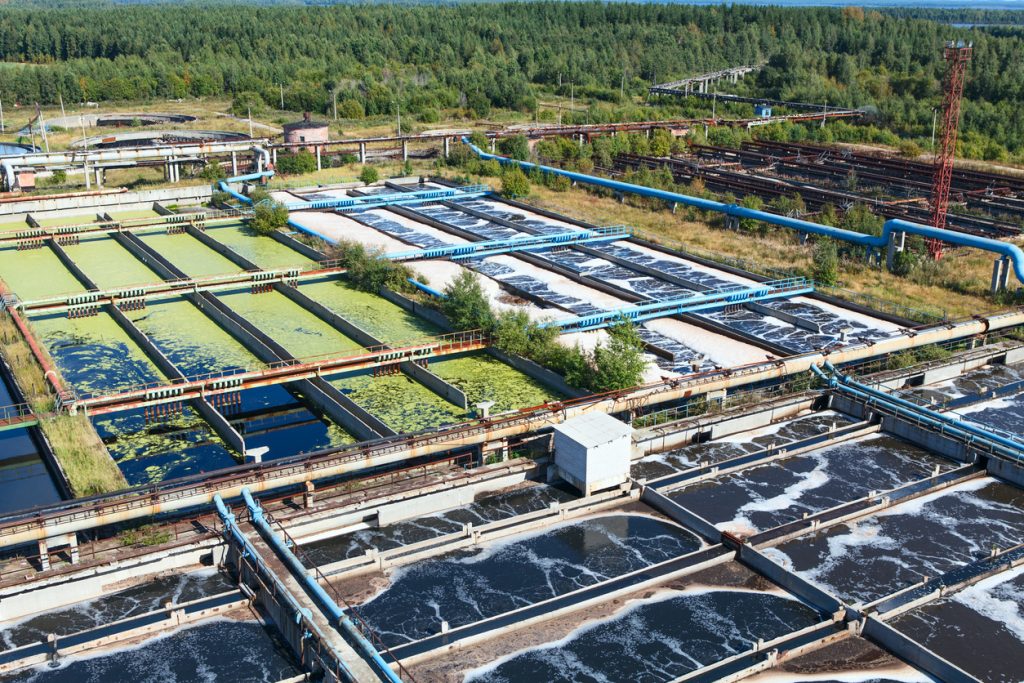Comprehensive Overview to Industrial Waste Water Treatment Procedures
Comprehensive Overview to Industrial Waste Water Treatment Procedures
Blog Article
Strategic Approaches to Enhance Waste Water Treatment Efficiency and Lessen Ecological Impact
In the realm of waste water treatment, the pursuit for boosted performance and decreased environmental influence is a perpetual obstacle that requires tactical remedies. The combination of advanced treatment technologies, energy-efficient procedures, source recovery approaches, enhanced nutrient removal methods, and smart surveillance and control systems represents a complex framework for addressing these pressing worries.
Advanced Therapy Technologies
Innovative membrane filtering systems have actually changed innovative wastewater treatment processes, substantially enhancing the elimination of impurities. These innovative systems work forcibly water through a semi-permeable membrane, properly separating pollutants from the water stream. The membrane's tiny pores trap contaminants such as microorganisms, infections, and suspended solids, permitting only cleansed water to travel through. This technology has proven to be extremely effective in getting rid of a wide variety of contaminants, consisting of drugs, heavy metals, and organic compounds, which are typically testing to remove through conventional therapy methods.
Furthermore, membrane layer filtering systems use countless benefits over traditional therapy techniques. They need less space, generate higher-quality effluent, and are extra resistant to changes in influent water top quality. In addition, these systems are very versatile and can be quickly incorporated right into existing treatment plants or utilized as standalone systems for decentralized applications. As the demand for tidy water proceeds to rise, the adoption of advanced membrane layer filtering innovations is vital to guarantee sustainable and effective wastewater therapy methods.
Energy-Efficient Processes
The integration of energy-efficient procedures in wastewater therapy systems is essential for maximizing resource use and reducing operational prices. By executing energy-efficient modern technologies, therapy plants can significantly reduce their carbon footprint and overall ecological impact. One vital method to boosting power performance in wastewater treatment is the application of advanced aeration systems, such as great bubble diffusers or surface area aerators, which can enhance oxygen transfer efficiency and lower power consumption. Furthermore, integrating power recuperation systems, like anaerobic digestion for biogas production or using excess warm for thermal procedures, can help balance out power requirements and promote sustainability.
Additionally, enhancing process control and automation with making use of sophisticated sensing units and keeping an eye on systems can boost total power performance by readjusting procedures in real-time based upon real need and conditions. Carrying out power audits and on a regular basis checking power efficiency signs are vital techniques to recognize locations for enhancement and track energy-saving efforts efficiently. In general, the adoption of energy-efficient processes in wastewater treatment not just profits the atmosphere but also adds to lasting expense savings and functional sustainability.
Resource Healing Approaches
With a focus on enhancing resource application and sustainability in wastewater treatment systems, the execution of resource healing methods becomes a critical aspect in boosting functional effectiveness. Resource recuperation methods in wastewater treatment entail the identification and removal of useful resources from the waste stream, thereby transforming what was when taken into consideration waste into a valuable property. By executing source helpful resources healing methods such as nutrient elimination and healing, power generation from raw material, and the manufacturing of recyclable water, wastewater therapy plants can reduce ecological impact while making the most of efficiency.

Improved Nutrient Removal Techniques
Applying advanced nutrient elimination strategies is vital for optimizing the performance of wastewater treatment systems. One of the crucial techniques utilized for enhanced nutrient elimination is the procedure of biological nutrient elimination (BNR), which involves the removal of nitrogen and phosphorus through biological procedures.

In addition to BNR, advanced treatment approaches such as membrane bioreactors (MBRs) and constructed wetlands can also be employed to boost nutrient removal performance. By incorporating these sophisticated nutrient removal techniques right into wastewater treatment communities, systems and markets can successfully lower nutrient contamination and safeguard the environment.
Smart Surveillance and Control Solution
Making use of cutting-edge innovation, the combination of wise monitoring and control systems transforms the functional effectiveness of wastewater treatment centers. These systems incorporate sophisticated sensing units and information analytics to continuously keep an eye on essential criteria such as pH degrees, turbidity, liquified oxygen, and circulation prices in real-time. By gathering and analyzing this information, operators can obtain valuable understandings into the efficiency of the treatment processes, enabling aggressive changes to optimize therapy effectiveness.
Smart tracking and control systems additionally sustain remote tracking capacities, permitting drivers to access real-time information and control functions from off-site places. This remote availability improves functional flexibility and responsiveness, making it possible for swift treatments in instance of system breakdowns or fluctuations in influent quality. In addition, the anticipating maintenance capabilities of these systems assist avoid equipment failures and lessen downtime, ultimately boosting the general integrity of wastewater treatment operations (Waste Water Treatment).
Final Thought
In conclusion, critical methods such as sophisticated therapy modern technologies, energy-efficient processes, source healing techniques, improved nutrient elimination techniques, and clever tracking and control systems play an important function in enhancing wastewater treatment efficiency and lessening ecological impact. By implementing these techniques, wastewater therapy plants can boost their general performance, minimize power consumption, recover important sources, and ensure compliance with environmental guidelines. These methods are important for effective and sustainable wastewater monitoring methods.

In conclusion, strategic methods such as advanced treatment technologies, energy-efficient processes, source recuperation methods, improved nutrient removal methods, and clever surveillance and control systems play an essential role this contact form in boosting wastewater treatment efficiency and decreasing ecological impact.
Report this page